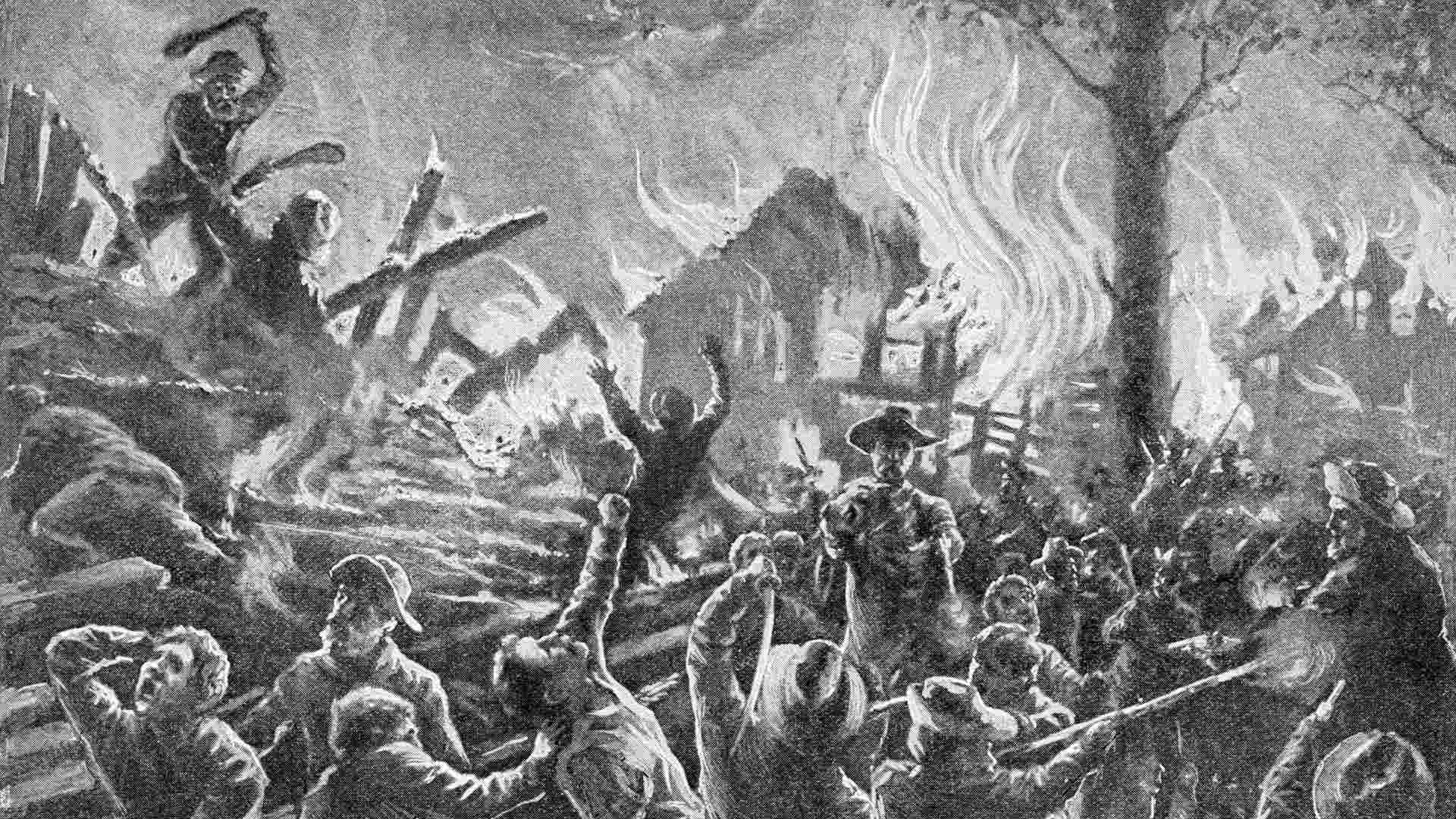
Bleeding Kansas was a turbulent period in American history, marked by violent clashes between pro-slavery and anti-slavery settlers in the Kansas Territory between 1854 and 1859. This conflict was a precursor to the Civil War, highlighting the deep divisions within the United States over the issue of slavery. Why did Bleeding Kansas happen? The Kansas-Nebraska Act of 1854 allowed settlers to decide whether Kansas would be a free or slave state, leading to a rush of both factions into the territory. Tensions escalated quickly, resulting in brutal confrontations and significant bloodshed. What were the key events and figures? From the sacking of Lawrence to John Brown's raid at Pottawatomie Creek, Bleeding Kansas was filled with dramatic episodes and notable personalities. Understanding this period helps grasp the complexities that eventually led to the Civil War.
What Was Bleeding Kansas?
Bleeding Kansas refers to a series of violent events involving anti-slavery and pro-slavery settlers in the Kansas Territory between 1854 and 1859. This period was marked by intense conflict and bloodshed, setting the stage for the American Civil War.
-
Kansas-Nebraska Act: The Kansas-Nebraska Act of 1854 allowed settlers in those territories to decide for themselves whether or not to allow slavery. This principle, known as popular sovereignty, led to violent clashes.
-
John Brown's Role: Abolitionist John Brown played a significant role in Bleeding Kansas. He believed armed insurrection was the only way to overthrow the institution of slavery in the United States.
Key Events During Bleeding Kansas
Several key events during Bleeding Kansas highlighted the intense conflict between pro-slavery and anti-slavery factions.
-
Sack of Lawrence: In 1856, pro-slavery forces attacked and looted the town of Lawrence, an anti-slavery stronghold. This event escalated tensions significantly.
-
Pottawatomie Massacre: In retaliation for the Sack of Lawrence, John Brown and his followers killed five pro-slavery settlers in the Pottawatomie Massacre.
-
Battle of Black Jack: Often considered the first battle of the Civil War, the Battle of Black Jack in 1856 saw John Brown and his men clash with pro-slavery forces.
Impact on National Politics
The violence in Kansas had a profound impact on national politics, influencing the course of American history.
-
Formation of the Republican Party: The conflict in Kansas helped spur the formation of the Republican Party, which opposed the expansion of slavery into the territories.
-
Dred Scott Decision: The Supreme Court's Dred Scott decision in 1857, which ruled that African Americans could not be citizens and that Congress had no authority to prohibit slavery in the territories, further inflamed tensions.
Notable Figures in Bleeding Kansas
Several notable figures emerged during Bleeding Kansas, each playing a crucial role in the conflict.
-
Charles Sumner: Senator Charles Sumner was a vocal critic of slavery. His speech "The Crime Against Kansas" led to his brutal caning by pro-slavery Congressman Preston Brooks.
-
David Atchison: A pro-slavery advocate, Senator David Atchison encouraged Missourians to cross into Kansas and vote illegally to ensure it became a slave state.
Long-Term Consequences of Bleeding Kansas
The events of Bleeding Kansas had long-term consequences that extended far beyond the borders of Kansas.
-
Prelude to the Civil War: The violence and political strife in Kansas served as a prelude to the Civil War, highlighting the deep divisions within the country.
-
Kansas Admitted as Free State: Kansas was eventually admitted to the Union as a free state in 1861, just months before the Civil War began.
-
Impact on Popular Sovereignty: The failure of popular sovereignty in Kansas demonstrated the impracticality of allowing territories to decide the issue of slavery for themselves.
Cultural and Historical Legacy
Bleeding Kansas left a lasting legacy on American culture and history, influencing how the nation remembers the struggle over slavery.
- Literature and Media: The events of Bleeding Kansas have been depicted in various works of literature and media, including the novel "The Killer Angels" and the film "Santa Fe Trail," highlighting its enduring impact on American culture.
The Legacy of Bleeding Kansas
Bleeding Kansas wasn't just a series of violent clashes; it was a pivotal moment in American history. This period highlighted the deep divisions over slavery, setting the stage for the Civil War. The fierce battles and political struggles in Kansas Territory showed how passionate people were about their beliefs, willing to fight and die for them.
The events in Kansas also influenced national politics, leading to the rise of the Republican Party and the eventual election of Abraham Lincoln. The courage and determination of those involved in Bleeding Kansas remind us of the importance of standing up for what we believe in, even when faced with great adversity.
Understanding Bleeding Kansas helps us appreciate the complexities of American history and the sacrifices made by those who came before us. It’s a testament to the enduring struggle for justice and equality in the United States.
Was this page helpful?
Our commitment to delivering trustworthy and engaging content is at the heart of what we do. Each fact on our site is contributed by real users like you, bringing a wealth of diverse insights and information. To ensure the highest standards of accuracy and reliability, our dedicated editors meticulously review each submission. This process guarantees that the facts we share are not only fascinating but also credible. Trust in our commitment to quality and authenticity as you explore and learn with us.


